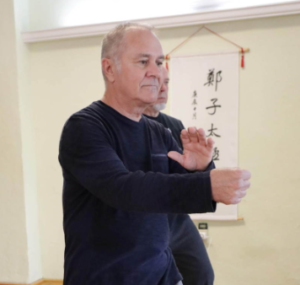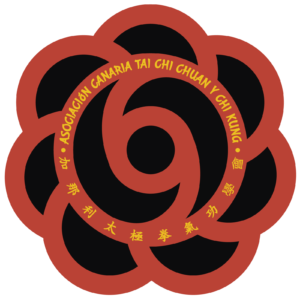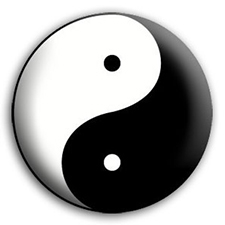Slanted FlyingJournal of Tai Chi Chuan
Training
Multitasking? The Mind, Attention, and Intention in Taijiquan
We want to maintain our concentration and awareness without being distracted. But with so many things to pay attention to in a fight, how can we avoid splitting our attention and suffering from the inefficiency of “multitasking” (switching rapidly between tasks, or even dropping tasks if there are more than two)?
We have all likely experienced the problem of focusing on one of the opponent’s hands during push-hands (tui shou 推手) training, and getting caught by the actions of the other hand, or of becoming vulnerable to a counterattack when we are focused on our own attack. By gaining an overall sense, rather than focusing on specific individual parts, practitioners can group tasks together and limit the number of tasks that the mind needs to focus on.
The Taijiquan classic attributed to Wang Zongyue contains the following (as translated by Paul Brennan): “Although there is an endless variety of possible scenarios, there is only this single principle [of yielding and sticking] throughout.” This is an example of how to act in response to complex and variable interactions while simplifying the mental tasks needed (and thus avoiding the problems caused by our inability to multitask).
 One can look at interacting with an opponent as wanting to remain comfortable while making the opponent uncomfortable. Taijiquan does this through yielding (to remain comfortable) and sticking (to make the opponent uncomfortable).
One can look at interacting with an opponent as wanting to remain comfortable while making the opponent uncomfortable. Taijiquan does this through yielding (to remain comfortable) and sticking (to make the opponent uncomfortable).
The same classic also states: “The basic of basics is to forget about your plans and simply respond to the opponent.” By forgetting about specific plans of your own, the mind is not distracted by the requirements of that plan, freeing the mind up for focusing on what is actually occurring with the opponent.
Other martial arts may take a different approach from Taijiquan, relying on being aggressive and initiating the interaction. This allows them to dictate the interaction (using their plan) so that they are using a technique that is routine, and for which many of the possible reactions are known and have been practiced against. This approach counters the lack of multitasking ability by attempting to keep the interaction within what has become routine for that fighter. If the recipient has not gained familiarity with the attack, then their mind will be occupied (distracted) by their specific response to the specific attack.
The problem with that approach is that it works poorly during novel situations. Taijiquan seeks to use a method that can respond appropriately to any situation, whether or not the practitioner is familiar with the specific situation.
There are other sayings and analogies that some practitioners use for Taijiquan, some of which are given below.
A properly inflated ball that is floating on water reacts instantly to any force contacting it, and this analogy is sometimes used to provide a mental image that responds without needing numerous individual thoughts. To be useful, this analogy needs proper structure training (knowing yourself) and proper resiliency (relaxation) and freedom of movement (ability to change).
Since the ball analogy is primarily defensive and does not really address attacking the opponent, another analogy is often used: attack like a river flowing to the sea (or, against an opponent, flowing towards their spine). Like a river, any obstruction or resistance is simply flowed around, and the Taijiquan practitioner does not need to focus on the multitude of potential ways that the opponent may resist the advance.
The ball provides defense, while the river gives the intention of counterattacking during defense.
Once control of the opponent is obtained, especially if their balance is disrupted, then their ability to change, as well as their ability to focus (giving them too many tasks for their mind to deal with), is compromised. A practitioner can then focus on the specifics of their attack, implementing applications from their forms and interactive work.














I do not use Facebook, so I cannot reply directly to Kim Foale above, so I will respond here.
I probably should have given a citation for that. If you are interested in reading more about multitasking studies, Wikipedia gives numerous studies that you can look up. The Wikipedia entry on Human Multitasking gives a different value, quoting Meyer as “often double the time or more”